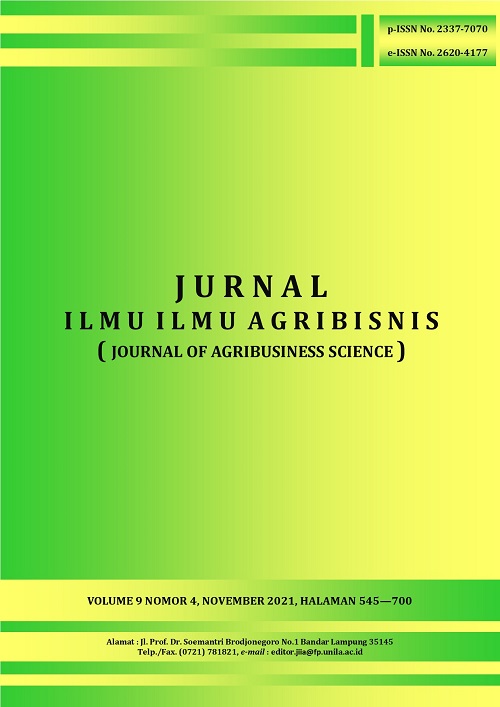BAURAN PEMASARAN DAN STRATEGI PENGEMBANGAN PRODUK OLAHAN KOPI ROBUSTA DI KOPERASI TIRTO KENCONO AIR NANINGAN KABUPATEN TANGGAMUS
DOI:
https://doi.org/10.23960/jiia.v9i4.5401 Abstract View: 393
Abstract View: 393
Abstract
This study aims to analyze the marketing mix and the development strategy of robusta coffee processed products in the Tirto Kencono Air Naningan Cooperative Tanggamus Regency. The research method used is a case study. The analytical method used is descriptive qualitative analysis and SWOT analysis. The marketing mix applied includes good quality robusta coffee products, cash and discounted prices, personal selling promotions, and accessible road to the cooperative. The internal environments consist of products, financial management, human resources, location, and marketing, while the external environments consist of culture, technology, climate and weather, competitors, and government policies. The strategies for developing robusta coffee products in the Tirto Kencono Cooperative are to maintain the quality assurance by utilizing modern technology, to improve skills in marketing by utilizing government support through the given UMKM training, and to implement social media to increase sales volume.
Key words: coffee, development strategy, marketing mix
Downloads
Downloads
Published
How to Cite
Issue
Section
License
Authors who publish with this journal agree to the following terms:
Authors retain copyright and grant the journal right of first publication with the work simultaneously licensed under a Creative Commons Attribution License that allows others to share the work with an acknowledgement of the work's authorship and initial publication in this journal.
Authors are able to enter into separate, additional contractual arrangements for the non-exclusive distribution of the journal's published version of the work (e.g., post it to an institutional repository or publish it in a book), with an acknowledgement of its initial publication in this journal.
Authors are permitted and encouraged to post their work online (e.g., in institutional repositories or on their website) prior to and during the submission process, as it can lead to productive exchanges, as well as earlier and greater citation of published work (See The Effect of Open Access).














